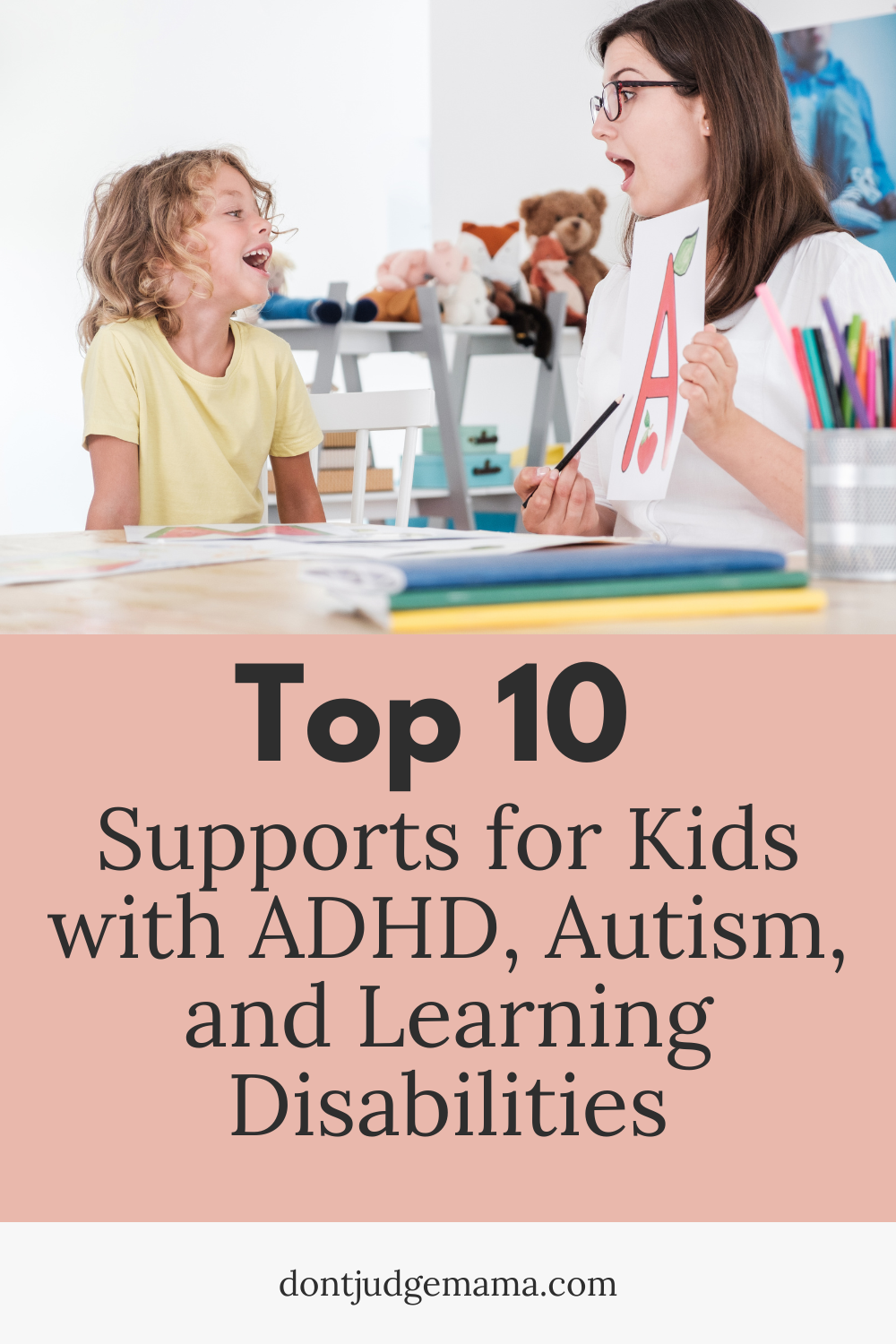Additional Support Options for Children Who Are Struggling
Help! My child needs help but I don’t know what to do!
Whether your child has ADHD, dyslexia, a learning disability, or autism, there are additional supports that can help your neurodiverse child. As a consultant, I’ve found that many parents are unaware of the therapies or resources available. To bridge that gap, I’ve created this guide to help you find the support your child needs.
Introduction
Parenting a child with unique learning or behavioral needs can be overwhelming. You might be asking yourself, “Where do I even begin?” The good news is that there are many support options, both through schools and external services, that can make a world of difference. This guide is designed to give you an overview of those options so you can take the first steps toward helping your child thrive.
School Supports
Start with the School
The first step is to work with your child’s school. If your child doesn’t have an Individualized Education Program (IEP), consider requesting an initial assessment. The evaluations completed for an IEP provide valuable insight into your child’s strengths and needs. If your child qualifies for special education, they’ll receive services tailored to their needs. To learn more about the IEP process, visit Understood.org.
If your child attends a private school, you can still request an IEP through your local public school. However, services provided may be limited. Even so, the information gathered during the evaluation is valuable and can guide further steps. For example, it may uncover specific challenges like dyslexia or processing delays that can help you decide which additional supports may be needed.
Consider a 504 Plan
If accommodations are sufficient, ask your school to develop a 504 plan. Accommodations help students complete the same tasks as their peers with adjustments in time, format, or setting. While 504 plans do not include specialized services, they ensure your child has the necessary supports in place. Examples of accommodations include extended test time, preferential seating, or a quiet environment for testing.
Address Social-Emotional Concerns
For issues like school avoidance or emotional regulation, request a meeting with school staff. Some schools have counselors who can work with your child or connect you with community resources. Email the principal with your concerns to initiate the process.
Outside of School Supports
If your child doesn’t qualify for an IEP, they attend a private school or you want additional support, there are many external resources available. Here are some options to consider:
1. Educational Therapy
Educational therapy provides one-on-one support for students struggling due to ADHD, learning differences, or other challenges. It addresses not just academic skills but also cognitive, emotional, and social factors affecting learning.
- Key Benefits:
- Strategies tailored to your child’s learning style.
- Boosts confidence and resilience.
- Educational therapists are trained professionals who assess a student’s specific needs, develop tailored intervention plans, and help build skills like organization, time management, reading comprehension, writing skills, math computations or math fluency.
Unlike tutoring, which focuses solely on academic content, educational therapy addresses underlying cognitive, emotional, and social factors. For example, a therapist may work on improving executive functioning skills while simultaneously addressing reading difficulties.
Educational therapy can be costly. Consider contacting local universities with educational therapy programs, as they may offer low-cost options with graduate students. If foundational skills like reading decoding, fluency or basic math skills are a challenge, educational therapy is a worthwhile investment.
2. Occupational Therapy (OT)
OT helps individuals develop or recover the skills needed for daily living. It’s particularly beneficial for children facing challenges with:
- Emotional Regulation: Techniques such as deep breathing exercises and sensory breaks.
- Sensory Processing: Tools like weighted blankets, swinging activities, or exploring textures to improve focus and reduce meltdowns.
Occupational therapy can also help with fine motor skills, such as handwriting or using scissors, and gross motor coordination for activities like climbing or running. Check with your pediatrician and insurance provider to see if OT is covered.
3. Speech Therapy
Speech therapy can address communication challenges, including:
- Pragmatic language skills for social interactions.
- Active listening and conversational skills for ADHD.
- Interpreting facial expressions and body language for autism.
Speech therapists may use play-based approaches for younger children, while older children might engage in structured role-playing activities to practice real-life scenarios. Speech therapy can significantly enhance communication and social skills, fostering stronger relationships and boosting self-esteem. Check for insurance coverage through your pediatrician. Virtual or in person options are available depending on your needs and the service provider.
4. Mental Health Therapy
A mental health therapist can provide critical support for children with ADHD, autism, or learning disabilities. Therapists can:
- Teach emotional regulation, impulse control, and coping strategies.
- Use tools like play therapy or social stories for children with autism.
- Address the emotional impact of learning challenges, such as low self-esteem or frustration.
Finding an in-network therapist can be challenging, but platforms like Talkspace or BetterHelp offer virtual options that may be covered by insurance. Note that in-person therapy might be more effective for younger children who benefit from hands-on engagement.
5. Applied Behavior Analysis (ABA)
ABA is a therapeutic approach grounded in behavioral psychology principles. It improves communication, social skills, and adaptive behaviors, especially for children with autism. Previously ABA was primarily for children on the spectrum, however, it is increasingly being used to support children with ADHD as well.
- Focuses on understanding triggers and reinforcing desirable behaviors.
- Involves one-on-one sessions with measurable goals.
ABA can also be used to address specific behaviors, such as improving cooperation during transitions or reducing self-injurious behaviors. An ABA therapist often works with the child in the school and home setting for extended periods of time providing valuable support in these settings. Look for a qualified Board Certified Behavior Analyst (BCBA) and verify insurance coverage for ABA therapy.
6. Neurofeedback
Neurofeedback is a brain-training therapy that uses real-time feedback to help individuals regulate brain activity. It can improve focus, emotional regulation, and behavior for children with ADHD, autism, and anxiety.
- Sessions involve monitoring brain activity while engaging in tasks or games.
- Results can vary, and multiple sessions may be required.
While neurofeedback has potential benefits, it’s essential to approach it with realistic expectations. Consult with your child’s healthcare provider to determine if neurofeedback is a good fit. Look for certified practitioners through organizations like the Biofeedback Certification International Alliance (BCIA).

Help for Parents
1. Behavior Parent Training (BPT)
BPT teaches parents evidence-based strategies to manage challenging behaviors effectively. It focuses on:
- Reinforcing positive behaviors through clear communication.
- Establishing consistent routines and consequences.
Programs like Triple P (Positive Parenting Program) or Parent-Child Interaction Therapy (PCIT) offer structured frameworks to guide parents. BPT may be covered by insurance. Check with your pediatrician for referrals.
2. Therapy for Parents
Therapy can provide:
- A safe space to process emotions like frustration, guilt, or isolation.
- Tools for implementing effective parenting strategies.
- Improved collaboration and communication within families.
Therapists specializing in neurodiverse parenting can offer targeted guidance. Virtual therapy options make it easier to find providers covered by insurance. Additionally, community mental health centers often provide low-cost services.
3. Parent Coaching
Parent coaching is a collaborative process designed to empower parents with tools, strategies, and insights to navigate challenges. Unlike therapy, coaching is action-oriented and focuses on:
- Managing behavioral issues.
- Addressing learning differences.
- Improving communication and family dynamics.
Look for parent coaches who specialize in your area of need. Many offer virtual sessions, making them accessible regardless of location. Coaches often provide practical strategies that can be implemented immediately, such as creating visual schedules or using positive reinforcement techniques.
Conclusion
There are many supports available, but keep in mind some of these supports can be expensive. Do your research, for example your child might benefit from OT and therapy, look into both to see if one is covered by insurance. Often it is easier to find an OT covered by insurance than therapy, so consider trying that service first to save you money. Additionally, you don’t want to overwhelm your child with too many therapies in a week. Depending on their age and needs, consider which one or two are the most important and focus on those. Remember, your child needs time to be a child too. It’s all about finding the right balance to support their needs in all areas. Don’t forget the most important thing you can do is build connection with your child!
Parenting a neurodiverse child comes with unique challenges, but you don’t have to navigate them alone. Whether through school-based supports, external therapies, or resources for parents, help is available. Start by identifying your child’s most pressing needs and exploring the options listed here. Remember, taking the first step can make a world of difference for both you and your child.
Check out this FREE resource: Top 10 Strategies to Support Neurodiverse Kids at Home and School! Click HERE to get the resource.





